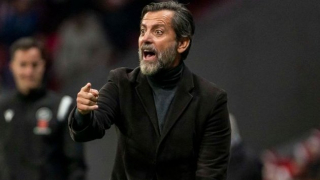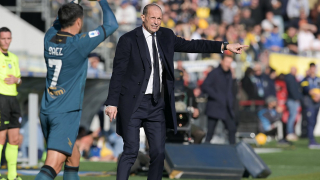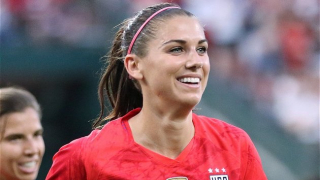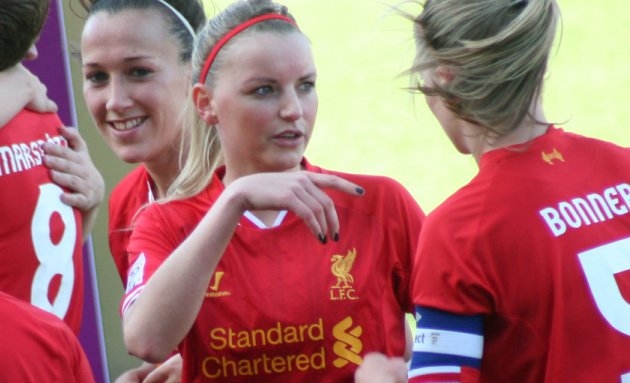This week, we review another recent book that came out around the 2019 Women's World Cup in France. Kieran Theivan (based in England) and Jeff Kassouf (the founder of the excellent U.S.-based women's football site the Equalizer) have together written The Making of the Women's World Cup: Defining Stories from a Sports Coming of Age (Robinson, London, 2019).
The book is a solid review of the previous seven Women's World Cups. This new work certainly has a lot of information about the American team, as they won three finals, lost another and hosted two World Cup Tournaments in 1999 and 2003. Delightfully, the book—rather than a straight history—looks at the past tournaments through legendary players and teams such as Marta and Brazil in 2007, Nadine Angerer and Germany in 2003 and 2007 and Kelly Smith and England in 2015.
In Chapter 1—The Early Years—Jeff Kassouf makes the point that the first Women's World Cup (not yet having that currently strong brand as FIFA was unsure of whether it would be successful but rather called it the First FIFA World Championship for Women's Football for the M&Ms Cup) drew strong attendance in China (where officials encouraged people to attend to boost their bid on the 2000 Olympics, which they narrowly lost to Sydney, Australia). The Americans surprised the other teams with their different attacking, pressing style as 1991 Golden Ball Winner Carin Jennings (now Gabarra) said: "I think it was the start of the U.S. women's national team programme and the start of a programme that won three World Cups and four Olympic gold medals. That was the start of the culture of the U.S women's national team. That culture has never wavered. That is a culture of mentality, competitiveness and hard work, along with talent. So, I think it was the start of that. That has always been there. Every person who has ever played for the US national team is connected in that regard (pages 18-19)."
Chapter 2—The Birth of the Lionesses—focuses on the 2015 event in Canada through the prism of England's path to third place. Theivan profiles Steph Houghton (Manchester City) and her elevation to team captain at the comparatively young age of 26—over previous captain Casey Stoney (31)—by former women's national team head coach Mark Sampson, even though Houghton had missed the 2007 World Cup and 2009 Euros through injury. Houghton recalled: "I'd just moved to [Manchester] City and I had been given the armband, but in terms of my international career I was nowhere near being a regular starter. So for me I just wanted to make sure I was in the squad. Mark said he saw me as a leader of his team, but obviously there were a lot of candidates like Fara Williams and Jill Scott, who had played a number of times for England, Kelly Smith was still involved at that time, and of course Casey, who was current captain….I will always remember sitting down with him at St. George's Park around April. I'd had the armband a few times and no way did I think it would be a possibility for the long term, but I remember him saying what I brought to the team and the sort of things he was looking for in his captain, and then he asked me if I would take the role and be the leader of the team. Obviously, you're delighted but the rest of the conversation was a bit of a blur….For me it wasn't working against them [the senior players], it was a case of using their experience and using them as fellow leaders to create a team environment and a special environment where we loved playing for England (pages 26-27)." Houghton is still one of the core members of the team in defense and has over 100 caps for a side that has reached the semifinals of the last two consecutive Women's World Cups (2015 and 2019) and it was fascinating to hear in-depth from her about England's preparation and progress to a bronze medal in Canada.
Chapter 7 on Kelly Smith was entitled England's Golden Girl Arrives—and profiles one of the leading ambassadors of the game. The former English international forward emphasized the importance of league soccer for the development of the domestic game. Smith discussed the 2005 European Championships which England hosted, which were televised throughout Europe: "The 2005 experience was amazing because we didn't have to qualify for that tournament, and obviously it was hosted in our home country. It meant we got to play in front of our home fans and we really wanted to develop the game, and TV coverage was starting to happen, so we really wanted to play well to get people talking about women's football. It was great because you'd go to the grounds and you'd be playing in front of fifteen to nineteen thousand, which I think was a record at that time for a women's game. It was a lot of fun to play in (page 121)." This reporter was in Sweden and Russia for most of the tournament, where the games were televised and the tournament was an important step in the growth of the game in Europe. Smith felt quite the let down when she went back to her domestic league, even though she played for Arsenal which won the European Club Championship at the end of the 2006-07 season: "It was difficult because you know mentally what is coming from international football.
But when you're not playing at that level week in, week out and you're playing some league games that you had won before you'd even walked onto the pitch, it makes that step up more challenging. Some of the players would have friendly bets between themselves to see what the scoreline was going to be because that's how it was. There were probably only a few teams you knew you'd get a good game against—Charlton and Everton. You'd get into bad habits when it's too easy. You don't do your defensive work because you can get away with it. But at international level you can't do that. The players knew going into the big games that you had to be switched on, and we made sure of that because we knew the magnitude of the game. The players are fitter and faster at international level, and we need to adjust to be ready for that (Page 122)." England qualified for the 2007 WWC in China but as Kieran Thievan wrote: "But all the talent in the world wouldn't be able to compensate for the current state of domestic football in England, with players only training two to three times a week with their club, and having to balance their daily lives with their football., even though Arsenal own the league title, two cups and what is now the Women's Champions League title (page 128)." It will be interesting to benchmark the attendance figures and reaction in the country between 2005 and 2021 when England again hosts the European Finals, in which should be an outstanding event.
Chapter 8—A Hat-Trick and a Worldwide Movement focuses on now-retired American forward Abby Wambach and the prelude to the 2015 Tournament in Canada, where the games were designed from the beginning to be played on artificial turf. Wambach led an international group of 40 players and positioned FIFA and the Canadian Soccer Federation that their plan violated European charters and Canadian law for gender discrimination equality as men's World Cups never had nor would ever be held on turf fields. Wambach said in March 2013: "We've worked so hard as female athletes—not only here in the United States, but internationally—to grow the game and in my opinion, I think this is taking a step back. All of the men's international players around the world would argue the same point. A lot of these guys will not play on an artificial surface because it is an injury-prone surface and I don't blame them (Page 143)."
Kassouf writes: "Wambach would state after a January 2015 meeting with FIFA officials that the playing surface decisions were set in stone, but she would also later point out that FIFA officials had promised her that there would never again be a Women's World Cup played on artificial turf. That's hardly a binding contract, but it was clear that this type of battle for equality was going to be necessary, whether in 2015 or down the line (Page 145)." In France this past summer, all the games were held on grass pitches and I believe that this is a non-issue now for future tournaments, and we have Wambach and other vocal players to thank for that. Kassouf continues: "Around that same time, FIFA announced an increase in prize money for the Women's World Cup, which was a small victory that at least appeased players. Women's players had long been told to be thankful for what they had. The two years of battling the bigwigs over what women's players felt was, morally and legally, gender discrimination, proved to be the exposition to the approaching tidal wave for the fight for equal rights (Page 145-146)." FIFA doubled the prize money amount (from $15 Million to $30 Million) in late December 2018 for the 2019 Women's World Cup. We would expect that amount to continue to rise ahead of the expanded 32 team tournament in 2023.
Kassouf also included interesting insight from Heather O'Reilly [who will retire from the sport at the end of this NWSL season for the reigning champions North Carolina Courage] who, "would describe the World Cups proximity to the U.S. as the perfect scenario: "The feel of a home World Cup without the pressure of being hosts (Page 147)." The level of American support in cities close to the border, particularly in Winnipeg and Vancouver, was overwhelming and a contributor to the American victory in the tournament.
In Chapter 9—Australia's Kids are Allright—the review of Australia's Women's National Team is a stellar job, focusing on the restructuring of the nation's regional development system. The discussion of the Matildas 2007 World Cup campaign in China—where they opened the tournament by blasting Ghana 4-1, tied Norway 1-1 and then came back from 2-1 down to tie Canada in their last group game to advance to their first ever knockout round on an injury-time shocking goal from Cheryl Salisbury. I had covered three of Australia's four tournament games in China—including that stunning draw in Chengdu that shattered the tournament dreams of the 2003 semifinalists Maple Leafs. Canada seemed to be cruising to a runner-up spot in the group and the knockout stage, including an 85th minute goal from Christine Sinclair, before Salisbury's late goal just before the final whistle drew the Matildas level, vaulting the Australian side into second place in the group. Australia finished second on five points to Norway's seven while Canada finished third on four points and the sight of the Canadian players crying and distraught on the field at the conclusion of the game sticks to me to this day. The game had been postponed a day because of a typhoon warning, though the media were not told about the delay until we were at the stadium, and the weather was not particularly threatening at that point from my standpoint. The Matildas then fell to eventual finalists Brazil 3-2 in another stirring match in Tianjin, coming back from an early 2-0 deficit and gave the favorites some troubling moments but never quit attacking; Brazilian forward Cristiane scored the winner in the 75th minute. Despite the narrow defeat to the ultimate 2007 runners-up, the Australian players after the match were cordial with the media and proud of their accomplishments; they had started a path for the national team that has led to their powerhouse status in present times and helped to propel the launch of the soon to be 12-year-old W-League the next year. The Australians, their coach Tom Sermanni and his vibrant and articulate group of players was one of the highlights of that tournament for me.
This book is quite well researched and written by two experts in the game.
Their focus on teams allow them to discuss key issues of the Women's World Cup—FIFA's initial reticence, equality issues in later years, development of youth programs and coaching regimes (Australia/Germany)—and leaves the reader with a solid understanding of the roots of the Women's World Cup, the leading tournament and most highly visible advertisement that we currently have for the women's game. This should be on all women's football fans' shelves.
Tim Grainey is a contributor to Tribal Football. His latest book Beyond Bend it Like Beckham on the global game of women's football. Get your copy today.
Follow Tim on Twitter: @TimGrainey
























